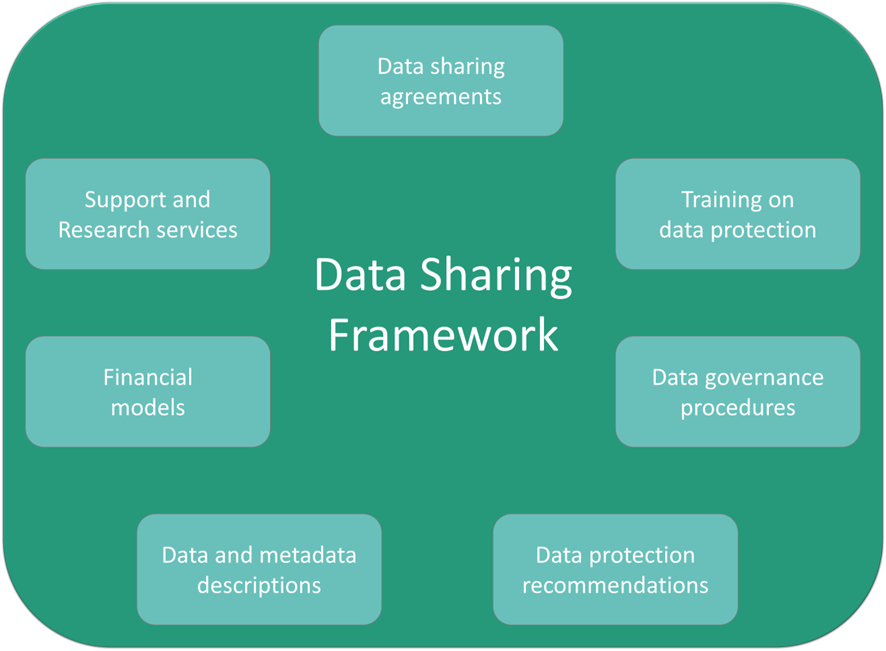2.5 Overview of the CCAM Data Sharing Framework
In the following chapters, we outline the CCAM Data Sharing Framework. Figure 1 shows the seven key areas it covers.

The CCAM Data Sharing Framework consists of:
- Project agreement content, including guidelines and checklists to incorporate the pre-requisites for data sharing in the agreements, which together with legal and ethical constraints form the conditions for data sharing. The project agreements include the grant agreement (together with the description of the work), the consortium agreement, the participant agreement and data provider agreements.
- Data and metadata description recommendations, to facilitate the understanding of the context in which the data was collected and the validity of the data. These include a suggested structure for the documentation of data, divided into four categories: study design and execution documentation, descriptive metadata (e.g., how the data is calculated or sampling frequency), structural metadata (e.g., how the data is organised) and administrative metadata (e.g., access procedures).
- Data protection recommendations, focusing on personal and confidential data issues. It consists of security procedures and requirements for actors involved in data exchange, including detailed implementation guidelines.
- Training on security and human subject protection for all involved personnel. The guidelines cover four topics: who should be trained and when, what content should be part of the training (including detailed suggestions), how to do the training, and how to document it.
- Support and research services, proposing functions such as providing information/training to facilitate the start-up of projects, offering (for example) processed data for researchers less familiar with data, making analysis tools available or performing complete research tasks. This section also addresses the on/off boarding in a federated data sharing context.
- Financial models to provide funding for the data to be maintained and available, and data access services. Nine financial models are discussed, and a list of data management costs is provided.
- Data governance procedures which describe topics to consider when defining a protocol on allowance to use data and on/off-boarding a data space.
Each area has its own chapter that follows. It contains lessons learned from previous large European projects, recommendations, checklist and procedures, and raises questions for a project to be considered. Many of these topics that are addressed should be consider early on in the project phase, in order to success in utilizing the most of the research data available within this domain.


